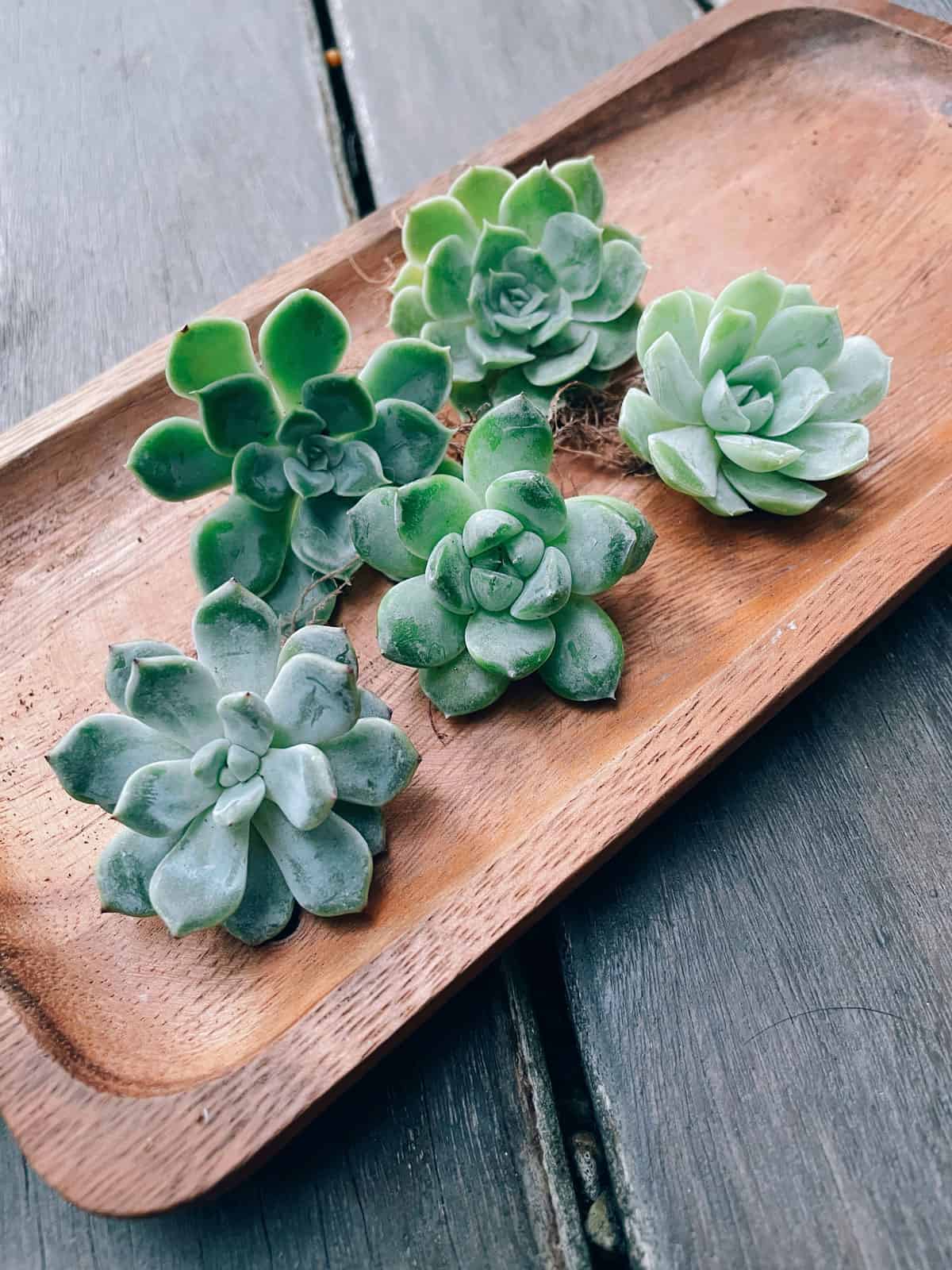Echeveria plants bring a touch of desert charm to any garden space or windowsill.
Yet, even these low-maintenance beauties can get a little too comfortable and start to overgrow, losing their compact, neat form.

Pruning isn't just a 'nice-to-have' – it's vital for keeping your echeveria healthy and vibrant.
With a few smart snips, you can encourage better growth, ward off diseases, and ultimately have a more lush and pleasing plant.
So, roll up your sleeves and prepare to give your echeveria the attention it deserves for a garden that's always flourishing.
Why You Should Prune Your Overgrown Echeveria
As we've briefly covered, pruning boosts growth and helps your plant form that iconic rosette shape it's known for. Here's why a little trim can mean a world of difference:
- Size Control: When your echeveria outgrows its home, pruning is your go-to move. It keeps your plant compact and manageable.
- Disease Prevention: Snipping off the damaged or diseased parts minimizes the risks of spreading any nasty bugs or fungi.
- Better Airflow: After a good trim, your plant can breathe easier. More room means less chance of humidity-related problems.
- Healthy Regrowth: Encourage new, vigorous growth, and maybe even a few pups to share with friends!
Remember to snip with clean, sharp shears for a cut that’s as healthy as it is helpful.
Considerations While Pruning Your Succulent
Pruning your echeveria or other succulents doesn't have to be intimidating. Here are some friendly pointers to help ensure your garden companions stay healthy and look their best:
Be Timely
Understand your plant's growth cycle. The optimal time to prune succulents is generally during their active growth period. This is when they can recover quickly and thrive.
Use the Right Tools
Use sharp, clean scissors or pruning shears. This prevents damage to your plants and reduces the risk of infection.
Evaluate Your Plant
Before making any cuts, look at your succulent. Identify dead or overgrown parts and plan your pruning strategy.
Gentle Handling
Succulents are delicate. Handle them carefully to avoid breaking healthy parts while removing the unwanted sections.
Be Conservative
It's better to under-prune than over-prune. You can always trim more later, but you can't put back what you've cut off!
How to Prune Your Overgrown Echeveria for a Lush Garden
Knowing the right pruning techniques is a must to transform your overgrown Echeveria into a masterpiece. Let's get straight into the specifics and turn that lush dream into a reality!
1. Cut the Head
When your Echeveria grows too tall, head cutting encourages a more compact form. Choose a healthy section at the top using your sterile pruner to cut precisely.
Aim to cut between leaves to keep the rosette intact.
2. Remove Old Leaves
Pruning isn't just about shaping; it's about health, too.
Gently remove dead or dying leaves from the bottom of your Echeveria to prevent disease and encourage new growth. This will also enhance air circulation within the plant.
3. Drying the Cuttings
After cutting, leave the piece in a dry, warm spot for a few days to make the cut end callous. This step is crucial as it helps to prevent rot when you replant the cutting.
4. Disinfect After Pruning
After you've made your cuts, consider applying a fungicide to the cut areas to prevent infection.
When Is the Best Time to Prune an Echeveria
Spring is the prime time to prune these succulents. This timing is advantageous because it corresponds with the plant's natural active growth cycle.
Pruning during this period stimulates new growth and helps prevent the plant from becoming leggy.
It's also a great idea to prune when you notice signs like overgrown or dying parts or when the plant shows legginess due to insufficient light.
Final Thoughts on Pruning
Pruning your Echeveria is more than a mere chore; it's a way to keep your garden's charm.
Remember, consistent pruning encourages lusher growth and maintains the appealing rosette shape that makes these succulents such gems in your collection.
When you snip away the overgrown or unhealthy parts, you give your plant a fresh start.
So grab those pruning tools and give your Echeveria the spotlight it deserves in your thriving succulent sanctuary!


